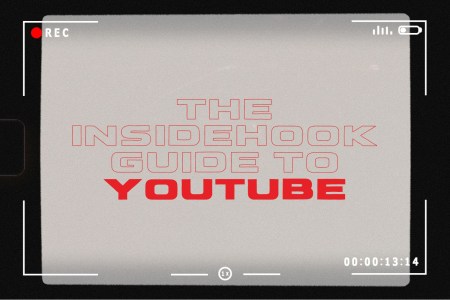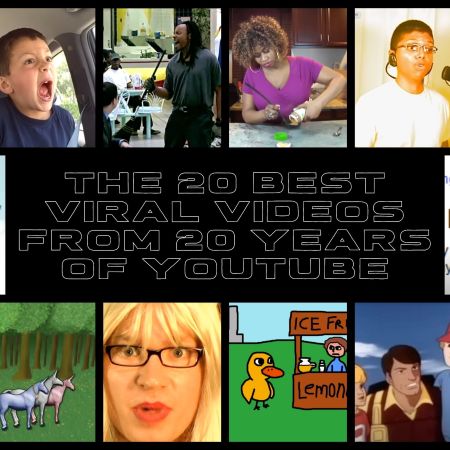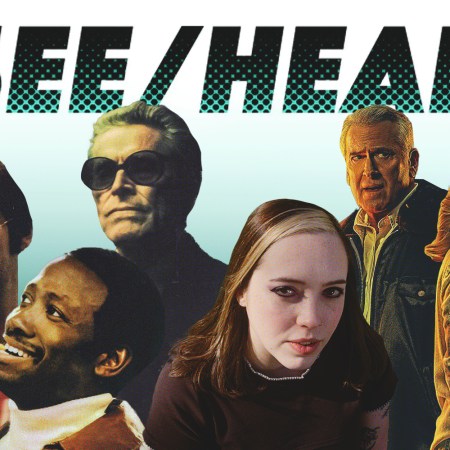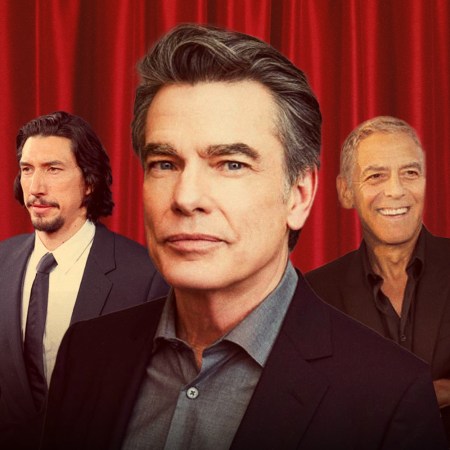Some afternoon in the summer of 2010, I was standing in a dingy office building in New York’s Garment District, staring at the screen of an iMac and doing what hundreds, maybe thousands of others were also doing at that same exact moment: watching a video called “Yosemitebear Mountain Double Rainbow 1-8-10.” Despite the shaky footage, the wind noise and the pixelated video, Paul “Yosemitebear” Vasquez’s footage of a “full-on double rainbow all the way” stretching across the Sierra Nevada foothills, and his crying, cracking voice — “What does this mean?” — sucked me in.
Watching it now, the video, running over three minutes and now with 51 million views, seems almost interminable by today’s standards. (Back then, we had different attention spans.) In the office, we laughed at Yosemitebear, but I wanted to teleport off of that drab carpet and into the brush of a Mariposa County mountainside. The clip felt transcendent — something about the weirdness of being alive, seeing something extraordinary, yet overreacting to it — and sharing that with the world…it might have been peak YouTube.
But of course, it wasn’t. YouTube’s rise has been relentless, with no signs of slowing.
Early next year, YouTube will turn 20, and the platform has more gravitational pull than ever. As you read this story, more than 500 hours of content are uploaded to the service every minute. And it’s no longer confined to shaky video watched on a computer screen. YouTube is being swiped through on smartphones and binged in living rooms, as people around the world collectively watch over one billion hours of YouTube content on their TVs every day. This summer Nielsen reported that YouTube accounts for 10% of TV viewing time, beating giants like NBC, Netflix and Disney.
Hollywood is on notice. YouTube’s sprawling influence has created an entire industry, inventing the “creator” and empowering them to turn hobbies into full-time careers. The platform’s biggest stars now rival some movie studios: MrBeast is projected to generate $700 million in revenue this year alone. Culturally and commercially, YouTube is a juggernaut, with creators, advertisers and audiences locking in. At least some of the surge is due to the rise of DIY and learning content, supercharged by the pandemic, when millions started to see YouTube as a way to learn just about anything.
But not everyone is feasting like MrBeast. Most creators never break through, caught in an algorithm where only constant production and frequent engagement pay off. Even many outwardly successful influencers are struggling to make ends meet. Internally, YouTube faces myriad challenges, moderating harmful content and combating misinformation just two of many.
As YouTube nears its 20th anniversary, it has Hollywood (and handymen) shaking in their boots. But how did a scrappy video-sharing site become the world’s dominant platform for entertainment, learning and everything in between?

Press Play: The Rise of YouTube
It started with a dick joke. On April 23, 2005, YouTube co-founder Jawed Karim uploaded the platform’s very first video, “Me at the zoo,” a 19-second clip featuring the youthful programmer casually standing in front of an elephant enclosure at the San Diego Zoo. “The cool thing about these guys is that they have really, really, really long…trunks,” he says. “And that’s cool.” The offhand nature of the video mirrors the half-assed plan Karim and fellow founders Steve Chen and Chad Hurley had in place for their new company. YouTube was initially conceived as a dating site where users would post videos introducing themselves.
As journalist Mark Bergen explains in Like, Comment, Subscribe, his great history of YouTube, the dating idea died quickly, but the platform pivoted into something bigger. The founders asked themselves a key question: “What if you could just upload any video you wanted?” The shift from a curated profile to user-driven, anything-goes content paved the launchpad. Its early years were filled with a grab bag of quirky uploads of pets, vacations and viral oddities like the double rainbow video (which would come later, but had the flavor of early YouTube). It was a time when the site’s simplicity allowed people to connect and share their lives in a raw, unpolished way.
Less than a year and a half after Karim uploaded the elephant video, Google swooped in and bought YouTube for $1.65 billion, forever changing the landscape of digital media. For their part, the founders feasted at TGI Friday’s that night in 2006. They still hadn’t figured out a way for the site to make real money, but Google saw the potential to make bank on viral videos.
The InsideHook Guide to YouTube
For YouTube’s 20th anniversary, we’re profiling creators, recommending channels and dissecting the viral, controversial, unstoppable video-sharing giantThe next seismic shift occurred in 2007: paying creators real money. The YouTube Partner Program (YPP) transformed YouTube from a quirky website into a fleshed-out media platform, essentially birthing the “creator economy,” allowing everyday people to turn their hobbies into full-time careers. One of the earliest stars was beauty influencer Michelle Phan, who used the platform to launch a multimedia empire with her makeup tutorials. Phan leveraged internet fame into real-world brand deals.
By the early 2010s, YouTube was shaping global culture, not just the online world. In 2012, Psy’s “Gangnam Style” — unbearable as it may be to some — became the first video to reach one billion views. It’s unlikely that the song would have been a global smash without the goofy YouTube video. It was a defining moment: the simple platform was creating entertainment phenomena that was crossing the entire planet.
At the same time, YouTube shifted its algorithm in a way that’s still shaping what we watch: rather than reward just raw view counts, in 2012 the platform started incentivizing “watch time.” Creators were now egged on to produce longer, more engaging content designed to keep audiences glued to their screens for extended periods. After that change, daily vlogs, episodic series and intricate tutorials surged in popularity.
It’s remarkable how little scrutiny [YouTube faces] for issues like misinformation, creator challenges or content moderation.
– Mark Bergen, Author of “Like, Comment, Subscribe”
But the platform hit major turbulence in 2017 with what creators called the “Adpocalypse.” Multinational companies like Coca-Cola, AT&T and Pepsi pulled their ads after it was reported that they ran alongside videos promoting ISIS, white nationalism and Holocaust denial. So YouTube put stricter content rules in place and demonetized millions of videos. Some YouTubers saw their earnings drop 80%. It was becoming clear that balancing billions in ad revenue with a platform based on free expression wasn’t quite that easy.
Since the Adpocalypse, YouTube has leaned on AI to monitor content, but controversies are ongoing. In 2019, the Christchurch mosque mass shooting, which was live-streamed on Facebook, subsequently spread across YouTube, showing just how fast harmful content can circulate despite moderation tools. YouTube now flags videos for misinformation, but it’s an imperfect system. The platform is in a constant battle with extremist content; keeping it under control is a mammoth challenge. We are a long way, it seems, from that first 19-second video in the San Diego Zoo.
In June 2023, YouTube quietly reversed its policy on content denying the legitimacy of the 2020 U.S. presidential election, no longer removing videos that falsely claimed widespread fraud. The move was met with criticism from lawmakers and experts concerned about the spread of misinformation. For his part, Bergen, author of Like, Comment, Subscribe, calls YouTube “a big tanker now — they can only make small adjustments,” and notes “it’s remarkable how little scrutiny they still face for issues like misinformation, creator challenges or content moderation.”
But — this may sound counterintuitive, especially if you have a relative that has turned into something of a crank — a 2024 UPenn study found that YouTube’s recommendation algorithm isn’t as radicalizing as many believe: users’ own preferences drive their content choices more than the algorithm does.

The World’s Largest Classroom
Even as YouTube faced challenges with content moderation, it was carving out a new identity: the ultimate platform for learning and discovery. Its vast collection of how-to videos and tutorials turned it into a practical tool for everyday problem-solving.
From Harvard’s free and famed CS50 programming course to instructions on replacing a Briggs & Stratton lawn mower carburetor, YouTube has become the world’s largest open classroom, offering everything from high-value academic lectures to the most niche DIY tutorials. Even professionals use it. When a friend of mine needed to convince his boiler installer that adding a generator switch to his system was possible, he ended up showing the technician a YouTube tutorial, proving the task could be done.
During the pandemic, this role was supercharged; according to a Pew Research study, YouTube saw the most growth of any social media platform while people looked for productive ways to spend their time. A few years earlier, in 2018, a survey found that roughly half of YouTube users already viewed the platform as essential for learning new skills, with 35% of U.S. adults using it to figure out tasks they’d never done before. This learning boom wasn’t confined to the U.S.; whether you’re in Texas or Tanzania, you could be watching MIT’s engineering courses or a video on installing a bidet in an RV.
How far can YouTube take you? Consider Finneas O’Connell, Billie Eilish’s brother and a music producer. O’Connell largely honed his craft on YouTube tutorials, learning to master software like Logic Pro X. “The real truth is that [my parents] taught me the foundations [of music] and then I learned the rest from YouTube,” O’Connell told FutureMusic. He then went on to produce Eilish’s debut album When We All Fall Asleep, Where Do We Go?, which won multiple Grammys in 2020, including Album of the Year.

YouTubers vs. Hollywood
While DIYers turn to YouTube for help fixing their dishwashers, Hollywood is increasingly looking to the platform to fix itself. Just look at Wesley Wang. Less than a year ago, the then-19-year-old Harvard economics student uploaded his short film Nothing, Except Everything, a romantic sci-fi thriller. The film, which Wang made during his senior year of high school, went viral on YouTube and won several film festival prizes. Hollywood took notice. In April, after a bidding war, Wang scored a deal with both Darren Aronofsky’s Protozoa Pictures and Sony TriStar to adapt it into a feature film, with Wang directing.
Wang’s leap to the big leagues shows the shift happening right now: Hollywood is no longer looking down on YouTube creators as amateurs. For a decade, we’ve been in the Marvel era, where Hollywood has played it safe with sequels and superhero flicks instead of risking it on original ideas. But the rise of YouTube creators like Wang might be a new path forward for the industry. Creators like Wang prove that they can get high engagement without blowing a ton of money, making them attractive to studios who are skittish about taking pricy, risky bets on original content.
Creators like MrBeast have taken an entirely different path to success. You know Jimmy Donaldson if you have a kid — and probably even if you don’t. Famous for stunts like “I Spent 50 Hours Buried Alive” and “Last to Leave $800,000 Island Keeps It,” he’s expected to rake in $700 million this year from his YouTube videos, merch and various business ventures. Donaldson knows exactly how to keep people hooked, with extreme challenges and huge giveaways. Every video is crafted to retain attention and encourage repeat viewing, playing perfectly into YouTube’s algorithm. By deeply understanding the platform, MrBeast is earning millions without needing Hollywood’s backing.
Most channels are a tiny dust particle in comparison to me, and I’m a tiny dust particle compared to Taylor Swift. The ramp is just absurd.
– Jason Fenske, creator of Engineering Explained
But while MrBeast’s massive success is undeniable, the platform remains heavily skewed towards a small group of top creators. “The MrBeasts of the world bring in the viewers and the revenue,” says Bergen. “There’s no creator middle class, and YouTube doesn’t seem interested in building one.”
Jason Fenske, creator of the brilliant Engineering Explained channel, with nearly four million followers, echoes a similar sentiment. “It’s by far the best-paying social media platform for creators,” Fenske says. “But that doesn’t mean you’re going to be successful.” He describes the difficulty of climbing YouTube’s steep hierarchy: “Most channels are a tiny dust particle in comparison to me, and I’m a tiny dust particle compared to Taylor Swift. The ramp is just absurd.”
And some creators are now warning others: success on the platform can come at a creative cost. Casey Neistat, one of the site’s early darlings, became known for making high-quality daily vlogs for over 800 days in the mid-2010s, and pioneering inventive storytelling in viral hits like “Snowboarding With The NYPD.” But in recent years, he’s spoken about the platform’s shift to view-chasing content. Citing a rash of Jimmy Donaldson clones, Neistat calls this era the “MrBeastification” of YouTube, where view count matters to many creators starting out on the platform — and creativity doesn’t.
“It’s what I hate about YouTube…. For [MrBeast], it’s beautiful,” Neistat told Steven Bartlett on his Diary of a CEO podcast. “But in the most reductive sense, when people look at [MrBeast’s success], they think, ‘Okay, that’s what it means to be a YouTuber — all that matters is views.’”
Speaking of podcasts, YouTube is changing the way even those are made. In Bloomberg’s recent Soundbite newsletter, Ashley Carman noted that podcasts are getting longer, with episodes like Lex Fridman’s nine-hour conversation with Elon Musk or Bartlett’s four-hour chat with Andrew Huberman racking up millions of views. People are tuning in on YouTube while multitasking, letting these marathon discussions play in the background. Creators continue to adapt to the platform’s dynamics.
This change reflects something Hollywood is catching onto: YouTubers have a raw, unfiltered link to their fans that traditional media can’t easily compete with.

What’s Next for YouTube?
As YouTube steams ahead towards its 20th anniversary — on February 14, 2025, two decades after the website was launched — it faces growing competition, not from Hollywood but from TikTok. In response to TikTok’s snappy, bite-sized videos that have captivated millions, YouTube launched Shorts in 2020, its own short-form video feature designed to tap into the viral, addictive appeal. The plan actually worked — in just a few years, Shorts has racked up billions of views, becoming a key pillar of YouTube’s strategy to keep younger audiences engaged.
As YouTube expands its short-form content, TikTok’s future in the U.S. remains uncertain. Congress passed a law in April requiring TikTok’s parent company, ByteDance, to sell the platform to a non-Chinese owner or face a nationwide ban by January 2025. ByteDance is challenging the law in court, arguing it infringes on free speech rights. With the legal battle ongoing, if TikTok is forced to exit the U.S. market, YouTube could stand to benefit, drawing more users to Shorts and further solidifying its dominance in short-form video.
But realistically, Alphabet, YouTube’s parent company, has its sights on other priorities. As David Bloom, a writer and content strategist in Los Angeles, puts it, YouTube is “a very nicely profitable sideshow” to Alphabet’s broader focus. While YouTube remains a strong asset, Alphabet’s main priorities are the cloud and AI, which are set to dramatically impact its search-ad business over the next decade — a trillion-dollar battleground where it competes with other tech giants.
Then you have the rise of generative AI, presenting an open question about the platform’s future. Bergen, for one, sees it as an echo of YouTube’s beginnings. This time, the barriers could be lowered for anyone to make polished, studio-quality footage. “It’s hard for me to see generative AI doing anything but benefiting YouTube,” says Bergen. “There will be copyright challenges and moderation issues, but those don’t seem existential.”
As AI further democratizes content creation, you have to wonder whether AI will stoke creativity or flood the landscape with artificial “perfection” — most likely it will be both. This feels reminiscent of YouTube’s early days when the ability to “upload anything” raised similar doubts about the future of creative expression. Two decades later, we might still be grappling with a different flavor of the same uncertainty, standing under a double rainbow, asking: What does it mean?
Additional reporting by Alex Lauer
This article was featured in the InsideHook newsletter. Sign up now.

























